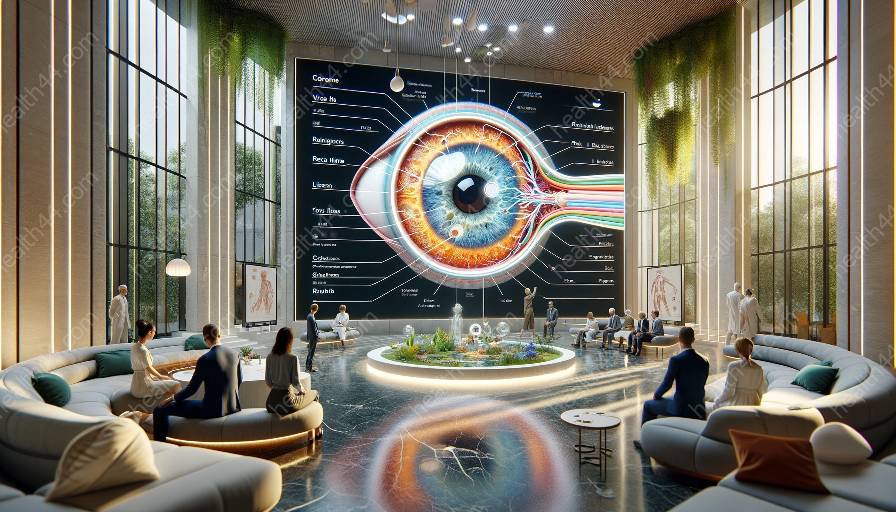Visual impairment is a significant public health concern, affecting millions of people worldwide. Public health interventions play a crucial role in improving access to vision care and reducing the burden of visual impairment. Understanding the anatomy of the eye and the role of vision rehabilitation is essential to addressing these challenges.
Public Health Interventions and Vision Care
Public health interventions aim to promote eye health, prevent vision loss, and enhance access to vision care services. These interventions include:
- Educational Campaigns: Raising awareness about the importance of regular eye exams, early detection of eye conditions, and preventive measures.
- School-Based Screening Programs: Identifying vision problems in children and ensuring timely interventions to support their visual health and academic performance.
- Community Outreach: Bringing vision care services to underserved populations through mobile clinics, community health fairs, and partnerships with local organizations.
- Legislation and Policy Initiatives: Advocating for policies that promote access to affordable vision care, including vision insurance coverage and support for low-income individuals and families.
Impact of Public Health Interventions
These interventions contribute to reducing the burden of visual impairment by:
- Early Detection and Treatment: Identifying eye conditions at an early stage and providing timely treatment to prevent further vision loss.
- Improving Access to Vision Care: Ensuring that individuals of all ages and socioeconomic backgrounds have access to eye care services, including eye exams, prescription glasses, and vision rehabilitation.
- Enhancing Quality of Life: Supporting individuals with visual impairment to lead independent and fulfilling lives through vision rehabilitation and assistive technology.
Understanding Eye Anatomy
Eye anatomy plays a fundamental role in the development and treatment of visual impairments. The key components of the eye include:
- Cornea and Lens: Refract light onto the retina, allowing the eye to focus on objects at various distances.
- Retina and Optic Nerve: Transmit visual information to the brain, converting light signals into neural impulses for visual perception.
- Macula and Fovea: Central areas of the retina responsible for sharp and detailed vision, essential for tasks such as reading and recognizing faces.
- Relevant Eye Conditions: Understanding the impact of conditions such as cataracts, glaucoma, diabetic retinopathy, and age-related macular degeneration on visual impairment.
Role of Vision Rehabilitation
Vision rehabilitation focuses on maximizing visual function and independence for individuals with visual impairments. This comprehensive approach includes:
- Low Vision Services: Providing specialized assessments and interventions to optimize remaining vision and enhance daily activities.
- Assistive Technology: Utilizing tools such as magnifiers, screen readers, and adaptive devices to support individuals with visual impairments in their personal and professional lives.
- Orientation and Mobility Training: Teaching individuals how to navigate their environments safely and confidently, utilizing non-visual cues and orientation aids.
- Counseling and Support: Offering emotional support and guidance to individuals and their families as they adjust to life with visual impairment.
Conclusion
Public health interventions are instrumental in improving access to vision care and reducing the burden of visual impairment. By promoting eye health, early detection, and equitable access to vision care services, these interventions can make a significant impact on individuals and communities. Understanding the anatomy of the eye and the role of vision rehabilitation is essential for developing comprehensive strategies to address visual impairment and support individuals in achieving optimal visual function and quality of life.





















